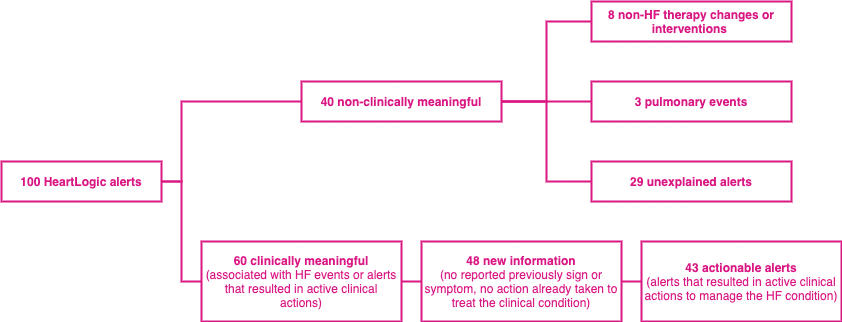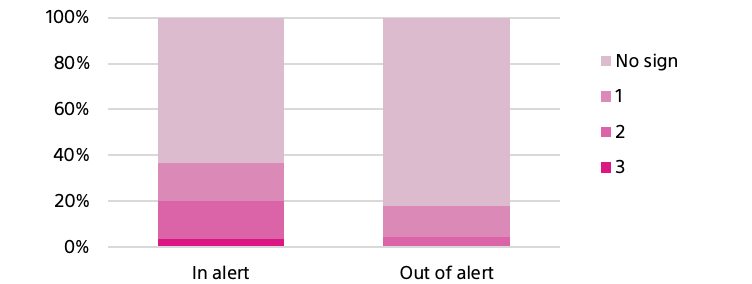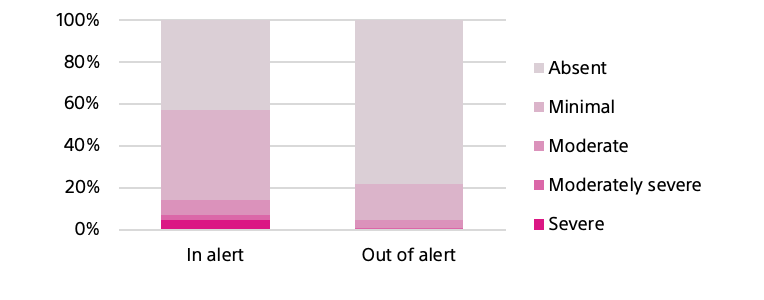Dear HeartLogic™ users,
It is our pleasure to share with you the latest findings about HeartLogic use in clinical practice just published in Clinical Cardiology
“Prospective evaluation of the multisensor HeartLogic algorithm for heart failure monitoring”
Clin Cardiol. 2020 Apr 18. doi: 10.1002/clc.23366
The results have been accepted at EHRA 2020 and HRS 2020 Congresses and are available on Congresses website.
The study and the results
Aim
The reliability and sensitivity of HeartLogic in prediction of impending HF decompensation have been demonstrated in MultiSENSE study1 and in the publication by Prof. Capucci et al.2
At this point the challenge was to evaluate the benefits of the adoption of HeartLogic in clinical practice and the impact in terms of workload for remote management of heart failure patients.
The aim of this study was to evaluate the clinical relevance of HeartLogic alerts and the clinical work-flow required to manage them. Moreover, the analysis compared an alert-based follow-up plan with a strategy based on scheduled monthly remote transmissions, and evaluated the association between the alert condition and signs and symptoms of worsening HF.
All patients were followed according to a standardized protocol that included:
- Remote data reviews and patient phone contacts every month
- Remote data reviews and patient phone contacts at the time of HeartLogic alerts
- In-office visits every 6 months or when deemed necessary.
Results
HeartLogic alerts management
This analysis was carried out on 104 patients who received a HeartLogic-enabled ICD or CRT-D in eight Italian centers.
During a median follow-up of 13 (10–16) months 100 HeartLogic alerts were reported (0.93 alerts/patient-year) in 53 patients: the time spent by the patients in the alert state was 15% of the total observation period.
The alerts were classified as reported in Figure 1:

Multiple HF-related conditions have been associated with the clinically meaningful alerts (Figure 2):

The multiple actions taken in 43 alerts to manage the HF condition detected by the alert were:
- 70%: Diuretic dosage increase
- 35%: Other drug adjustment
- 14%: HF hospitalization
- 7%: Device reprogramming
- 2%: Cardioversion
- 2%: Patient education on therapy adherence
The overall number of HF hospitalizations requiring at least one overnight stay was 16 (rate 0.15 hospitalizations/patient-year): only 5 HF hospitalizations were not associated with a HeartLogic alert (0.05 hospitalizations/patient-year).
Remote follow-up strategy
The remote follow-up examinations performed by the centers were: 1113 scheduled monthly transmissions (10.3 per patient-year) and 100 on the occasion of HeartLogic alerts (0.93 per patient-year).
Only 11 (1%) monthly remote data reviews detected HF events requiring clinical actions, while 43 (43%) HeartLogic alerts detected HF events requiring clinical actions (p<0.001).
The mean delay from HeartLogic alert remote data review to the next monthly remote data review was 14 ± 8 days.
Alert-based follow-up strategy
Conclusion
- This is the first experience to evaluate the HeartLogic algorithm in clinical practice and the analysis demonstrated that HeartLogic alerts are frequently clinically meaningful and associated with impending HF events
- The probability of detecting common signs and symptoms of HF at regular remote or in-office assessment is extremely low when the patient is out of HeartLogicTM alert state.
- The analysis confirmed that the volume of alert-driven remote follow-ups is limited when compared with a monthly remote follow-up scheme
- The adoption of an HeartLogicTM alert-based management strategy seemed more efficient than a scheduled monthly remote follow-up scheme.

















